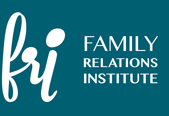Institute
The Family Relations Institute applies the Dynamic-Maturational Model of Attachment and Adaptation (DMM) to service delivery, including assessment, psychotherapy, early intervention, social work, the health services, and the courts.
The conceptual approach is a dynamic-maturational perspective on change and continuity in developmental pathways, particularly those that are associated with risk for dysfunction or psychopathology.
Overview
The DMM began under Mary Ainsworth’s guidance, with input from John Bowlby and E. Mavis Hetherington. That is, the roots of the DMM are in psychoanalytic theory, general systems theory, family systems theory, cognitive psychology – and clinical practice.
Under Ainsworth’s leadership, attachment gained both empirical data and conceptual breadth. At Johns Hopkins University, Ainsworth carried out her seminal study on quality of attachment (that yielded the ABC patterns). At the University of Virginia (where Patricia Crittenden earned her doctorate under Ainsworth’s mentorship), attachment became embedded in Bronfenbrenner’s social ecology theory. From the beginning, Ainsworth encouraged careful observation and expansion of assessment methods and theory.
The CARE-Index, with its compulsive patterns and two forms of insensitivity (controlling and unresponsive), was Crittenden’s masters’ thesis (1980). The A/C pattern was her dissertation (1983). Attachment theory was broadening to encompass family functioning and community contexts. Crittenden’s first family attachment study was undertaken at UVA with the support of Hetherington.
By the time Crittenden left UVA, she considered attachment as one part of a hierarchy of systems theory from intrapersonal to interpersonal to cultural. While Crittenden was at the University of Miami, she and Ainsworth modified the Strange Situation to create the PAA to better fit ‘at risk’ preschoolers’ behavior. Attachment was expanding beyond infancy and taking on the complexity of adult human behavior.
In 1992, Crittenden established the Family Relations Institute (FRI). FRI has brought the DMM to Europe, Australia, and Latin America, making it a more clinical and culturally sensitive theory. The process of developing assessment of attachment has continued with the assistance of many colleagues from many countries and cultures, creating the current life-span array of assessments.
The primary activities of FRI are:
- Courses in attachment theory
- Creation and testing of developmentally and culturally sensitive DMM assessments of attachment
- Training in the application of DMM assessments (in several languages and in a variety of cultures)
- Research
- Coding for others’ research


